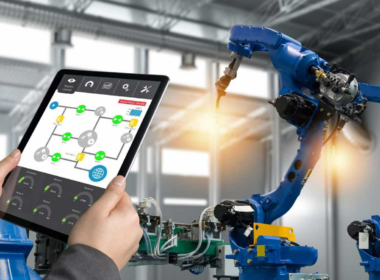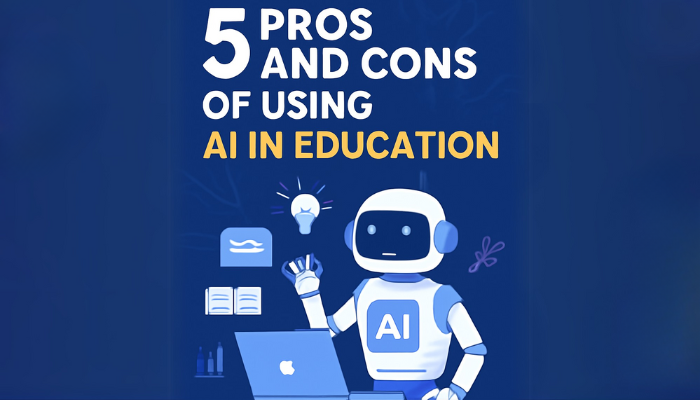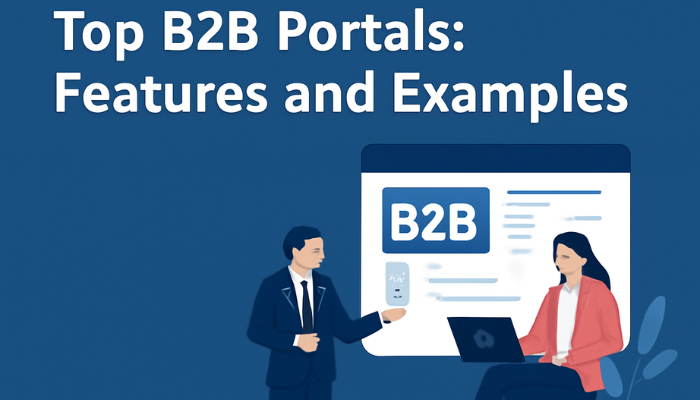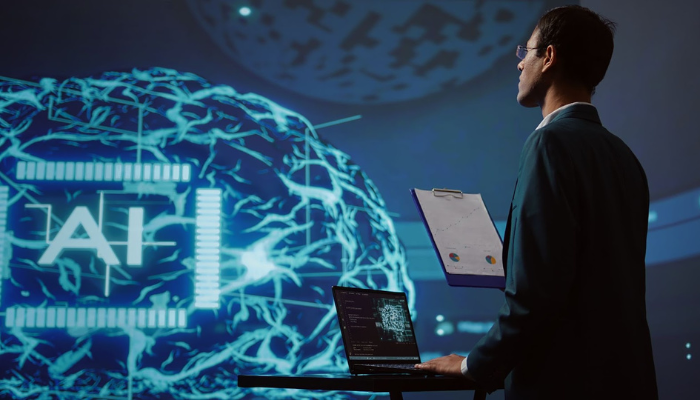You’re already aware of how quickly technology is changing industries, but education? That’s where the real disruption is happening right now. As a leader in the business, edtech, or investment world, you’ve likely heard about AI’s growing influence in classrooms and corporate learning environments.
But here’s the real question: Should you get on board, or is it just another trend?
Maybe you’re thinking, “What exactly can AI do for education?” or “Is this just for the big players, or can it scale for my business too?” Whether you’re running an edtech startup, overseeing an educational institution, or considering AI investments, you want clarity, what’s the real impact AI could have on your bottom line?
In this blog, we’ll unpack 5 key pros and cons of using AI in education to answer those questions. Get ready to look at AI not just as a buzzword, but as a tool that could shape the future of learning and your business.
AI’s Expanding Influence in Education
Artificial Intelligence is quickly becoming a key player in education, with its ability to improve learning experiences, automate administrative tasks, and enhance data analysis. The application of AI in education is gaining momentum, and it’s clear that it is shaping the future of both teaching and learning.
- Market Growth: The global AI in education market is projected to grow from USD 5.88 billion in 2024 to USD 8.30 billion by 2025, reflecting a 31.2% annual growth rate.
- Increased Adoption: Over 50% of K-12 teachers and 45% of higher education faculty now use AI tools in their classrooms, showing a significant increase from the previous year.
AI’s role in education is rapidly expanding, and its influence is becoming more evident as schools and institutions look to improve efficiency and enhance the learning process.
What is Artificial Intelligence in Education?
AI in education refers to the use of smart technologies like machine learning, natural language processing, and other tools to improve how students learn and how schools or institutions run. It helps make learning more personalized, efficient, and accessible.
Here’s how AI is being applied in education:
- Adaptive Learning Platforms: AI-powered adaptive learning platforms adjust the pace and difficulty of content based on individual student performance. This personalized approach ensures that each student is challenged at the right level, promoting better engagement and retention.
As a result, institutions see improved student performance, higher completion rates, and better learning outcomes. KPIs such as increased student engagement, lower dropout rates, and improved test scores help demonstrate a clear ROI on using adaptive learning tools.
- Automated Grading Systems: Automated grading systems that instantly grade assignments, quizzes, and exams allow teachers to focus more on teaching and less on grading. This efficiency not only speeds up feedback cycles but also gives students the ability to learn from their mistakes in real time.
Institutions benefit from reduced grading time, allowing staff to devote more energy to instruction. KPIs like reduced grading time, quicker feedback loops, and increased teacher productivity are key indicators of the value AI brings.
- Virtual Teaching Assistants: Virtual teaching assistants powered by AI can respond to student inquiries, provide tutoring, and assist with administrative tasks 24/7. These assistants ensure that students have constant access to support, which keeps them engaged and improves learning outcomes.
For institutions, the result is better student satisfaction and improved learning efficiency, with KPIs such as higher student engagement, reduced administrative costs, and improved overall performance being clear indicators of success.
- Speech Recognition and Natural Language Processing: These technologies help students with disabilities or those learning new languages by converting speech to text or reading text aloud. These tools make learning more accessible, allowing a wider range of students to succeed.
The impact is measurable in increased accessibility scores, higher engagement from diverse student groups, and improved retention rates, proving a strong ROI in creating a more inclusive educational environment.
- Intelligent Tutoring Systems: These systems offer personalized, one-on-one support to students, adapting to their learning style and pace. This helps students grasp difficult concepts and progress at their own speed, leading to better understanding and academic performance.
The result for institutions is a reduced need for remedial classes and better overall performance. KPIs such as higher test scores, improved graduation rates, and lower remediation costs are strong indicators of the benefits these systems bring.
- Behavioral Analytics: These analytics tools monitor student engagement and behavior in real time, providing educators with insights into when a student may be falling behind. Early detection allows for targeted interventions that keep students on track.
The impact is visible in reduced dropout rates, increased student engagement, and improved academic success, offering a solid ROI by addressing issues before they escalate.
Also Read: Impact of AI on Teaching and Learning in Education System
As we explore the growing role of AI in education, it’s clear that the technology brings several advantages to the table.
But how does it actually benefit schools, students, and even businesses in the education sector? Let’s take a look at some key pros of using AI in education.
Pros of Using AI in Education
AI in education brings a wide range of benefits that can improve both teaching and learning. From automating repetitive tasks to providing personalized learning experiences, AI tools help institutions enhance efficiency, engagement, and student outcomes.
Below are the key benefits of using AI in education.
1. Personalized Learning that Adapts in Real Time
AI doesn’t just offer a one-size-fits-all curriculum. It goes beyond static lessons and delivers adaptive learning. It is a system that learns from each student’s interactions and adjusts content accordingly. Think of AI as a personalized tutor that constantly tweaks the learning process to match a student’s pace and understanding, ensuring they never feel lost or bored.
- Real-time Adaptation: If a student excels at basic math but struggles with word problems, AI identifies that and adjusts the content, offering targeted practice on areas where the student needs the most help.
- Ongoing Learning Path: The AI system continuously monitors progress, evolving the learning path without any manual intervention from teachers.
Example: In a history class, an AI-powered platform tracks how well a student grasps key historical events. It adjusts the lessons, offering more engaging content like interactive timelines or immersive simulations when the student shows interest in specific topics, thus ensuring the learning stays relevant and engaging.
2. Instant Feedback- A Game Changer for Students and Teachers
AI’s ability to provide instant feedback is a huge advantage for both students and teachers. No longer do students have to wait days for grades; they get immediate insights into their strengths and areas for improvement.
But what’s more important is that this feedback is data-driven, giving precise information on why a student missed a question and how they can improve.
- Behavioral Adjustments: Immediate feedback helps students make quick adjustments to their learning, leading to faster progress.
- Reduced Teacher Load: Teachers no longer need to spend hours providing individual feedback, allowing them to focus on more meaningful interactions with students.
Example: Imagine a student submits a math assignment through an AI platform. As soon as they submit it, the AI doesn’t just mark it correct or wrong, it shows why the answer was wrong, offers hints, and provides a related problem to ensure the concept is understood before moving on.
3. AI-Driven Accessibility for Every Student
AI’s role in increasing accessibility is more profound than just converting text to speech. Advanced AI technologies enable real-time translation for language learners, speech-to-text for students with disabilities, and even the creation of customized learning experiences for those with special needs. It ensures no student is left behind, providing equal opportunities to learn in ways that suit them best.
- Inclusivity: AI helps schools cater to diverse student needs, from different languages to varying learning abilities.
- Equal Opportunities: By removing barriers, AI ensures that education is accessible to all, promoting equity in learning.
Example: In a language class, AI-powered software automatically translates spoken words into text, helping non-native speakers follow along with the lesson. Meanwhile, students with hearing impairments can access real-time subtitles, ensuring everyone stays on the same page.
Make learning personal with AI—customize each student’s journey.
4. Automating Repetitive Tasks, Saving Time for Teachers
AI takes care of time-consuming administrative tasks like grading, attendance, and data entry. This automation allows teachers to spend more time on creative and interactive teaching. AI even goes as far as organizing and analyzing student performance data, providing teachers with actionable insights on class trends without them having to sift through hundreds of papers.
- Efficient Workflow: Teachers can automate routine tasks, freeing up time for deeper engagement with students.
- Better Insights: AI helps teachers understand student behavior patterns, attendance issues, and learning outcomes, making it easier to provide targeted interventions.
Example: An AI system automatically grades multiple-choice tests and provides detailed reports on which concepts students struggled with. Teachers can then use these insights to tailor the next lesson, addressing specific knowledge gaps.
5. Real-Time Analytics for Smarter Decision-Making
AI-powered systems can analyze vast amounts of data in real-time, offering insights that were previously difficult to obtain. These systems monitor student engagement, progress, and behavior, helping teachers identify which students need extra help, and what teaching strategies are working.
How it benefits:
- Data-Driven Decisions: Teachers and administrators can use AI insights to create personalized action plans for students.
- Early Intervention: By detecting patterns early on, AI helps in addressing potential learning challenges before they become significant.
Example:
An AI system tracks a student’s performance over time, analyzing trends such as participation in discussions, assignment submission times, and test results. If a student shows signs of disengagement, the system alerts the teacher, who can intervene early to offer additional support.
Also Read: Artificial Intelligence Impact on Academic Processes and Education
As we explore the benefits, it’s also important to look at the challenges AI brings to education. While AI has the potential to change how we teach and learn, it’s not without its drawbacks.
Let’s take a closer look at the cons of using AI in education, focusing on the issues that can arise when integrating AI into classrooms, universities, and edtech companies.
Cons of Using AI in Education
AI in education brings some challenges alongside its benefits. For a closer look at the potential drawbacks, see the list below.
1. Lack of Human Connection
AI can’t replace the emotional intelligence and personal connection that human teachers bring to the classroom. While AI can provide personalized learning, it cannot understand a student’s feelings, motivations, or struggles in the way a teacher can. This is particularly important in subjects where emotional support and understanding are critical.
How it impacts:
- Student Engagement: Some students may feel disconnected from the learning experience when interacting with AI, leading to lower engagement and motivation.
- Social Development: Students miss out on social and emotional learning experiences that come from interacting with teachers and peers.
Example: A student struggling with anxiety or personal issues may benefit from a teacher’s empathy and encouragement—something an AI system simply cannot offer. AI lacks the ability to notice when a student needs a motivational boost or personal support.
2. Over-Reliance on Technology
The risk of over-reliance on AI is real, especially as more educational tools integrate AI into their systems. Teachers and students may become too dependent on AI for learning, which can lead to the underdevelopment of critical thinking skills and creativity.
How it impacts:
- Lack of Problem-Solving: If AI is always providing answers or guiding decisions, students might not develop the necessary skills to solve problems independently.
- Tech Dependency: Students may become too reliant on AI for feedback, losing the ability to self-assess or critically analyze their work.
Example: If an AI tutoring system is constantly solving problems for a student, that student might not fully learn the underlying concepts or develop problem-solving skills on their own, resulting in shallow learning.
3. Data Privacy and Security Concerns
With AI systems collecting and analyzing large amounts of student data, concerns about data privacy and security are growing. Sensitive information like grades, personal details, and learning habits are being stored and processed, making them vulnerable to data breaches or misuse.
How it impacts:
- Student Privacy: Improper handling of data can lead to breaches of student confidentiality, making them vulnerable to identity theft or exploitation.
- Trust Issues: If students, parents, and educators feel their data isn’t secure, it can undermine trust in the AI system and hinder adoption.
Example: A school using AI to track student progress and behaviors might store sensitive data such as medical conditions, test scores, or personal learning preferences. If hackers gain access to this data, it could put students at risk.
4. Potential for Bias in AI Algorithms
AI systems are only as good as the data they are trained on, and if that data is biased, it can lead to biased decisions. AI can unintentionally reinforce existing inequalities in the education system, such as favoring certain groups of students over others based on race, gender, or socioeconomic status.
How it impacts:
- Fairness Issues: Students from disadvantaged backgrounds might not receive the same level of support from AI systems, further widening the achievement gap.
- Reinforcing Stereotypes: If AI algorithms are not carefully designed, they could perpetuate harmful stereotypes or miss opportunities to support diverse learning styles.
Example: An AI system that evaluates student performance might place more emphasis on standardized testing, which could disadvantage students who do not test well due to language barriers, learning disabilities, or other factors. This bias could negatively affect their learning outcomes.
5. High Costs and Resource Requirements
Implementing AI in education isn’t cheap. It requires significant investment in technology, training, and infrastructure. Schools and institutions may find it challenging to afford these systems, especially in areas with limited budgets. Additionally, there’s the ongoing cost of maintaining and updating AI systems to keep them running efficiently.
How it impacts:
- Accessibility: Smaller schools or institutions with limited funds may struggle to implement AI tools, widening the gap between well-funded schools and those with fewer resources.
- Maintenance Costs: AI systems require constant updates and monitoring, which can strain budgets and human resources.
Example: A small private school may want to integrate AI to personalize lessons but could face a hefty price tag for software, hardware, and training staff. This financial barrier could prevent them from accessing the benefits AI offers.
Well, if these cons made you frown, don’t worry! There are clear ways to overcome these roadblocks and ensure AI becomes a valuable asset in education, rather than a challenge.
With the right strategies, you can avoid the pitfalls and maximize the benefits of AI.
How to Avoid These Roadblocks When Implementing AI in Education
Let’s take a look at how you can tackle these concerns head-on.
1. Human Connection in Learning
Roadblock: AI can’t replicate the emotional intelligence and personal connection that human educators provide.
Solution: Rather than relying solely on AI to “teach,” use it to complement the work of educators. AI can handle repetitive tasks like grading and administrative work, leaving more time for teachers to engage with students on a personal level. AI-driven tools like virtual assistants can help students when teachers are unavailable, but the human touch should always remain at the heart of education.
Tip: Implement AI as a supplement, not a replacement, for teachers. AI can take over routine tasks, while teachers focus on mentorship and emotional support.
2. Over-Reliance on Technology
Roadblock: Over-relying on AI might lead to a lack of critical thinking and problem-solving skills among students.
Solution: Create blended learning environments where AI provides personalized learning paths but doesn’t replace essential activities like group discussions, debates, or creative problem-solving sessions. Encourage students to use AI as a tool, not as the sole source of knowledge.
Tip: Ensure that AI is used for enhancing learning, not replacing the interactive, collaborative experiences that develop critical thinking skills.
3. Data Privacy and Security Concerns
Roadblock: Handling and securing student data can be a major concern with AI systems.
Solution: Choose AI systems that are compliant with data protection regulations (like GDPR or HIPAA), and implement strong encryption and access control measures. Be transparent with students and parents about how their data is being used and give them control over their information. Regular audits and security testing are also crucial to ensure data integrity.
Tip: Work with vendors that prioritize security and compliance. Incorporate privacy-by-design principles in your AI system development process.
4. Bias in AI Algorithms
Roadblock: AI systems can unintentionally reinforce biases, leading to unfair or unequal learning opportunities.
Solution: Ensure that AI algorithms are built using diverse, representative data and undergo rigorous bias testing. Collaborate with AI developers to create models that actively detect and correct biases during training. Keep an eye on how AI systems perform across various student groups to ensure fairness.
Tip: Regularly update the AI model to include new data and maintain fairness. Incorporate human oversight to spot biases AI might miss.
5. High Costs and Resource Requirements
Roadblock: Implementing and maintaining AI can be expensive, particularly for smaller institutions.
Solution: Start with scalable AI solutions that grow with your needs. Many AI platforms offer cloud-based solutions that reduce the upfront costs of hardware and maintenance. Additionally, there are affordable AI tools designed specifically for educational institutions, allowing you to start small and scale as needed.
Tip: Begin with pilot projects to test AI solutions on a smaller scale before committing significant resources. This way, you can measure the return on investment (ROI) and gradually expand.
Ready to implement AI in education without the pitfalls?
At Codewave, we design AI solutions that handle data security, bias, and integration to make AI work for you.
Embrace AI While Preserving the Human Element in Education
AI in education offers impressive opportunities, from customizing learning paths to automating administrative tasks. But as we’ve seen, it’s not without its challenges, such as data security, bias, and over-dependence on technology.
At Codewave, we help schools and learning platforms create AI-powered solutions that make education smarter and more engaging. Our focus is on developing software that grows with your needs, whether you’re adapting to remote learning, personalizing student experiences, or automating everyday tasks.
We use AI to personalize learning, making sure students get what they need at their own pace, keeping them engaged and improving results. By combining AI with design thinking, we solve common education problems like poor engagement, operational inefficiencies, and outdated systems.
How We Help:
- Personalized Learning with AI: We use machine learning algorithms to create adaptive learning experiences. Smart Sparrow and Knewton help customize content to each student’s needs, allowing them to learn at their own pace, stay engaged, and achieve better results.
- Custom LMS: AI-powered Learning Management Systems (LMS) like Moodle and Canvas automate grading, track student progress, and provide real-time feedback. These systems make managing education easier, allowing teachers to focus more on teaching while AI takes care of repetitive tasks.
- Mobile Learning Apps: We use Flutter and React Native to design apps, integrated with AI to offer personalized learning experiences. These apps allow students to learn anytime, anywhere, with content tailored to their learning style and pace, ensuring flexible, on-the-go education.
- Gamified Learning: We use AI-driven platforms like Duolingo and Classcraft, we add interactive and engaging gamification elements that motivate students to actively participate in their learning. These tools make learning enjoyable while improving retention and achievement.
- Smart Reporting: With tools like Google Analytics and Tableau, powered by AI, we provide educators with detailed insights into student performance. These AI tools help track engagement, measure progress, and identify students who may need additional support, ensuring timely intervention.
- Cloud Solutions: We build cloud-based platforms using tools like AWS and Microsoft Azure, making education scalable and secure. These platforms grow with your institution, offering a flexible and reliable environment to manage student data, content, and learning materials.
Let’s work together to build an AI-driven educational experience that’s both smart and human-centered.
[Let’s Put the “Smart” in Smart Education →]
Codewave is a UX first design thinking & digital transformation services company, designing & engineering innovative mobile apps, cloud, & edge solutions.







